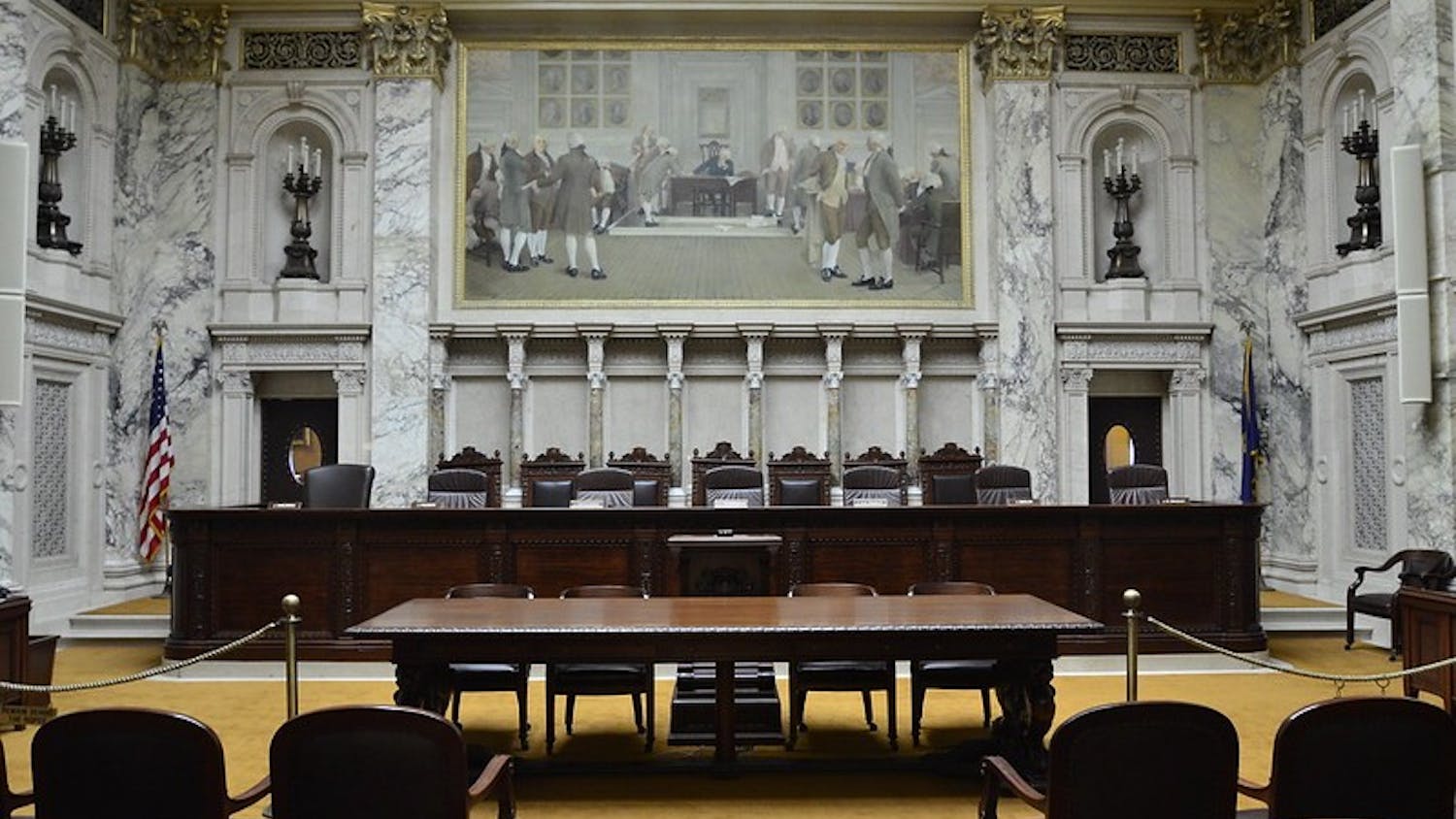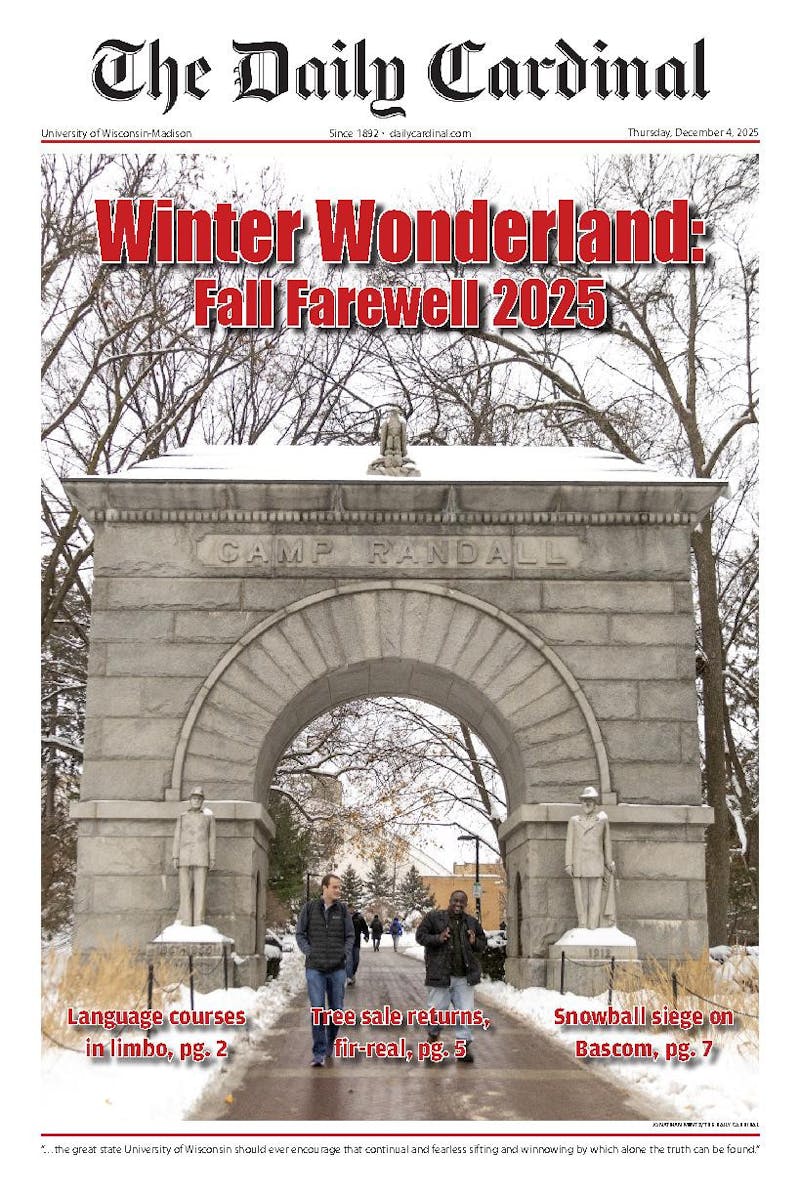\Art is a universal language. Everyone can appreciate each other and learn about the beauty of their diverse cultures and art,"" said UW-Madison graduate student Joy Chen.
Many students on campus would agree with Chen. There are nearly 60 undergraduate students currently enrolled in the dance and interarts and technology majors offered at UW-Madison. There are also many dance courses offered each semester, some specifically for dance majors and many others that are available for all students.
All dance majors need to take a certain number of credits of world dance. Classes are offered in many types of dance'everything from African and African Cuban to Javanese and Asian American dance. There are also ballroom dance, ballet, samba, tango and waltz, to name a few.
Mary Brennan, professor of dance at UW-Madison, focuses on movement analysis and teaching methods of dance. She often teaches through improvisation and has been teaching for 34 years.
""People experience space by exploring space in their movement,"" she said.
Different cultures from across the globe have different forms of dance and art. UW-Madison hosts a number of student organizations directed at teaching others about ethnic forms of dance and movement.
One ethnic dance student organization at UW-Madison is the Asian Pacific Dance study group. There are many people on campus from different countries who know different dances, and the group was formed so that students could teach each other and learn various cultural dances from each other.
""It's really cool to see the exchange,"" said Beverly Seavey, co-director of the Asian Pacific Dance study group.
Seavey, along with Judi Benade, formed the group five years ago.
The Asian Pacific Dance study group has significantly grown in the five years since its establishment. On average, 20 people meet at Union South every Saturday at 2 p.m. for dancing. Undergraduate students, graduate students, faculty, staff and other community members all come to dance. Newcomers are always welcome.
""You don't have to be a really spectacular dancer to join,"" Seavey said.
""It's another opportunity for people to show their talent, not just academic,"" said Chen, who has been dancing with the group for three years. Chen also teaches Chinese dances to the group.
The Asian Pacific Dance study group will be holding a nonprofit benefit performance on Sat., April 6, in Music Hall. The money made by ticket sales will go to support education in India. There will be a $3 admission fee for UW-Madison students, and a family price is not yet set. Many types of dances will be performed, including dances from India, China, Indonesia, Turkey and Hawaii.
Traditionally, belly dancing is called Rak Sharki, which means ""dance of the east"" or ""oriental dance."" The Belly Dancing group practices many traditional dances, which consist of Arabic, Turkish, Moroccan and Lebanese styles. They also do many Americanized versions of belly dancing, dancing to modern popular music such as Shakira.
""It's my stress release and the people are great,""said Leena Mohapatra, a UW-Madison junior and co-founder of the Belly Dancing group.
The Belly Dancing group was started three years ago and has grown since then. Every Tuesday night from 8 to 10 p.m., students get together at one of the two student unions to practice various types of belly dancing.
The group performs at various events on campus throughout the year. They have danced during the opening of Homecoming for the past two years. They have also danced for the past two years at the ""Party in the Park"", held at James Madison Park every spring.
The Belly Dancing group holds a workshop and performance every year. This year, the workshop will be on Sat., April 6, at the Great Hall in the Memorial Union. The workshop is open to anyone interested and will cost $25. Performance tickets will cost between $5 and $10.
On Wednesday evenings from 6 to 7 p.m. at Union South, students can be found dancing the Salsa, Merengue, Samba and other types of South American dances. Bernardo Uribe runs the Latin American Dance Lessons coalition of the South American Students organization.
""[Every Wednesday, people] get together and share our culture with the rest of the community,"" said Uribe. ""When people think of dance lessons in the United States, they think of numbers and steps and what to do and not to do. Here we just tell them to have fun.""
People of all levels are welcome to attend the informal weekly lessons. There is no dress code and it is not necessary for participants to come with a partner.
On Sat., March 2, the South American Students Organization will be holding a free event. There will be a performance by a Peruvian dance group. Later in the evening, the Latin-American dance group Avenida Brazil will perform along with a DJ. Attendants will be able to show off their skills as they dance the Salsa, Samba, Merengue and other types of dances.
For those interested in folk dancing, the UW-Madison student organization Madison Folkdance Unlimited is the place to be.
""Folk dancing for me is like everything,"" said Holly Swisher, a UW-Madison graduate student and member of Madison Folkdance Unlimited. ""It's my favorite thing to do.""
The group does many Eastern European dances, including dances from France, Scotland and England. They also do Turkish, Israeli, Russian, Japanese and African dances, as well as others. The group is always looking for new people to come and get involved.
Lessons are held every Wednesday and Sunday night at 7:30 p.m. at 1127 University Ave. The first hour consists of lessons and during the second hour dances are performed upon request. Easier beginner dances are mixed in with harder dances, so people of all levels can enjoy themselves.
""Israeli dancing allows me to feel spiritually connected to my Jewish heritage and draw strength from my ancestry,"" said Tamara Berger, UW-Madison undergraduate student and organizer of the Israeli dance group.
Half of the time is spent on teaching different Israeli dances, and the other half of the night is spent dancing and building on the skills people already know. Students, staff and community members at all levels are welcome to attend. The group dances to all Israeli-based dances, some older classical folk dancing and some modern Israeli dances.
The Israeli dance group meets to dance two times a month. People come to dance at Hillel on Langdon Street every other Thursday at 7:30 p.m. The group will be meeting this Thursday, February 21. There was an Israeli dance group in the past, but this year the group is becoming active again.
Although the various cultural dance groups on campus express their art in very different ways, they all have one thing in common'they are always welcoming new people and love to gain new members.





